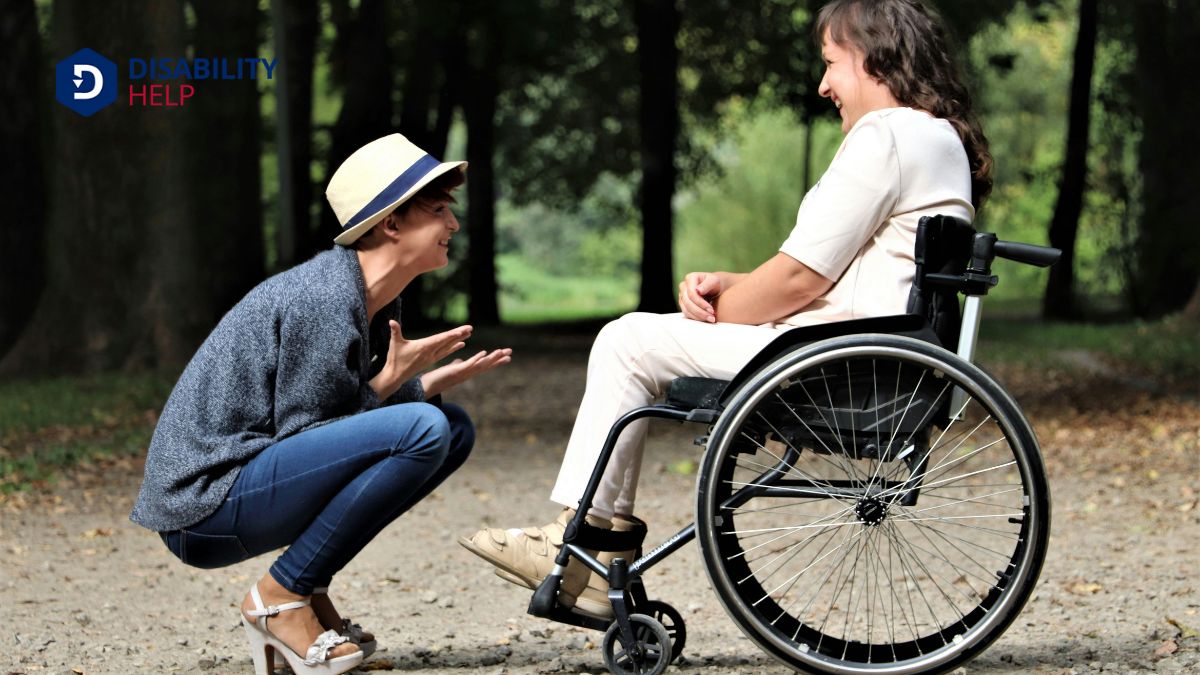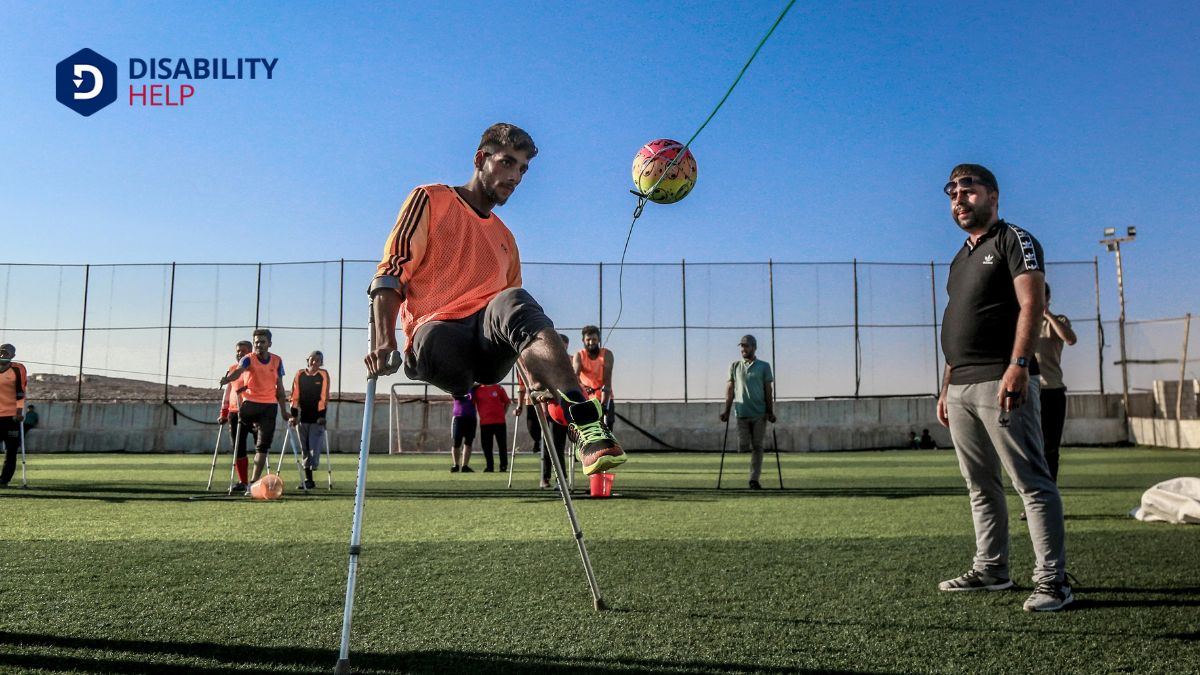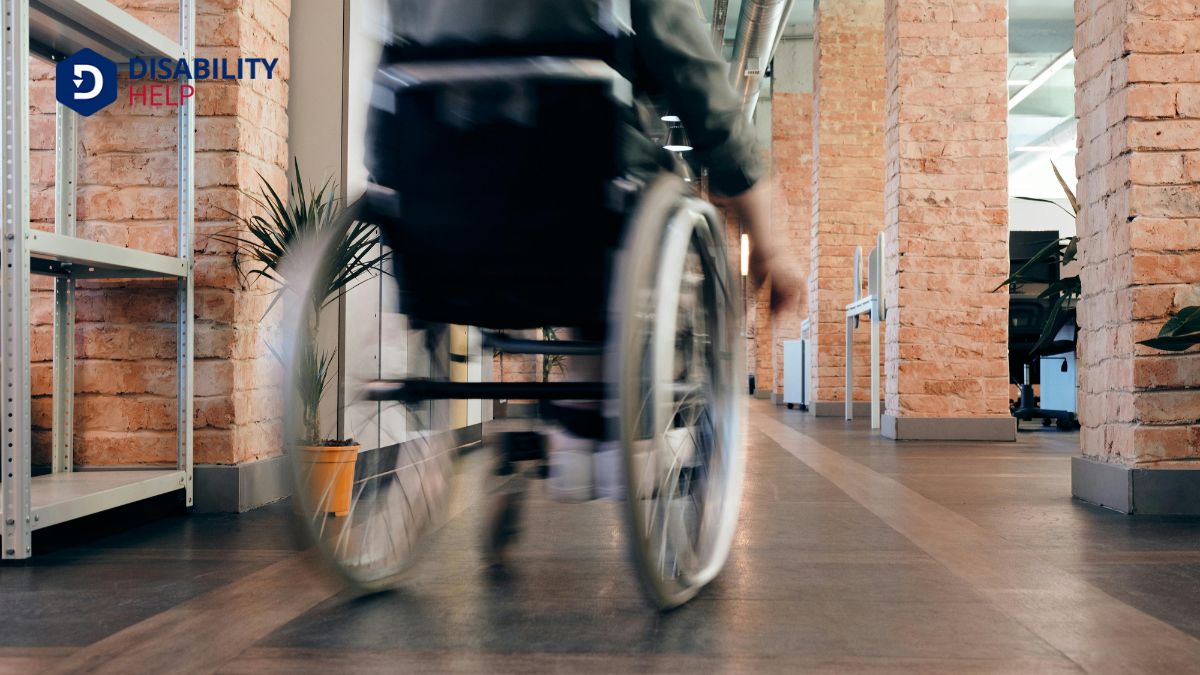We're witnessing disability policy changes now because of mounting economic pressures, legislative shifts aimed at empowermentThe process of gaining control, authority, and power over one’s life, often used in the context of..., and relentless advocacyThe act of arguing in favor of, supporting, or defending the rights and interests of individuals or ... efforts. Rising costs and limited work opportunities for disabled individuals have pushed for reforms. Meanwhile, new laws are focusing on promoting economic self-sufficiency and modernizing outdated policies. Advocacy has played an essential role, with increased awareness and bipartisan support driving changes. Technological advancements also enhance independence and quality of life, further highlighting the need for updated policies. As our society grows more aware and inclusive, we're seeing these crucial adjustments take place. Let's explore how these changes impact us all.
Key Takeaways
- Economic pressures from rising public expenditures and high poverty rates among individuals with disabilities necessitate policy changes.
- Legislative shifts prioritize economic self-sufficiency and workforce participation for disabled individuals.
- Increased advocacy efforts and grassroots mobilization are pushing for modernized disability benefitsFinancial assistance provided to individuals who are unable to work due to a disability, such as Soc... and policies.
- Technological advancements in assistive devices and adaptive equipmentDevices that assist individuals with disabilities in performing ADLs, such as grab bars or shower ch... enhance independence and accessibilityThe design of products, devices, services, or environments to be usable by people with disabilities.... for people with disabilities.
- Growing social awareness and media coverage of disability issues drive public support for inclusive policy reforms.
Economic Pressures
Economic pressures are pushing the need for significant alterations in disability policy. Rising public expenditures on disability programs, coupled with persistent high poverty rates among individuals with disabilities, signal the urgency for reform. Despite overall economic growth, people with disabilities continue to struggle with low-income levels and limited opportunities for work. This indicates that current policies are failing to provide adequate support and pathways to economic independence.
We see an increasing dependence on public programs like Supplemental Security Income (SSI) and Social Security Disability Insurance (SSDI)A U.S. government program that provides financial assistance to individuals who are unable to work d.... These benefits, while essential, often create a cycle of dependence rather than fostering economic self-sufficiency. The Social Security Administration faces mounting challenges as more individuals rely on these programs, highlighting the need for thorough changes.
Business and government leaders are recognizing the importance of addressing these issues. They understand that effective disability policy must dismantle the poverty traps and empower individuals with disabilities. Radical changes are required to align disability policy with modern thinking, promoting empowerment and economic independence. To break this cycle, we need policies that encourage work and increase income opportunities, reducing reliance on government benefits and lifting individuals out of poverty.
Legislative Shifts

Recognizing the economic pressures at play, we now turn our attention to the legislative shifts aimed at reforming disability policies. Recent changes in legislation are pivotal in addressing outdated disability policies that often trap disabled individuals in poverty. Policymakers are now focusing on creating modernized disability policies that reflect our current societal expectations and empower disabled people.
These legislative shifts aim to:
- Promote economic self-sufficiency, allowing disabled individuals to achieve greater financial independence.
- Empower disabled individuals by providing better access to employment opportunities.
- Modernize disability policies to align with the evolving needs of society.
- Stimulate the labor supply by encouraging and enabling the participation of disabled individuals in the workforce.
- Improve the overall quality of life for disabled people, ensuring they can contribute more fully to the economy.
Advocacy Efforts
We're witnessing the powerful impact of grassroots mobilization on disability policy changes. Through strategic advocacy and building bipartisan support, activists are driving conversations that address poverty, work opportunities, and modernizing benefits. As we explore these efforts, it's clear that the commitment of advocates is pushing vital reforms forward in Congress.
Grassroots Mobilization Impact
Grassroots mobilization has truly shifted the landscape of disability policy, thanks to dedicated advocates working tirelessly at the community level. Disability activists have been instrumental in raising awareness and building support through grassroots organizing. Their advocacy efforts have brought disability policy changes to the forefront, capturing the attention of policymakers and driving significant reforms.
Through grassroots mobilization, we've seen:
- Increased awareness of disability issues among the general public.
- Greater engagement from disabled individuals and their allies in advocacy efforts.
- Bipartisan support for modernizing disability benefits and promoting work incentivesPrograms or policies that encourage individuals with disabilities to enter or remain in the workforc....
- Policymakers are being held accountable for addressing disability rightsThe legal and human rights afforded to individuals with disabilities, often the focus of advocacy an... and needs.
- A stronger, more unified voice is demanding meaningful policy reforms.
These community-level efforts have undeniably influenced the political landscape. By sharing personal stories and mobilizing local communities, disability activists have underscored the urgency of policy changes. This grassroots approach hasn't only highlighted the immediate needs of the disabled community but has also paved the way for long-term solutions.
Grassroots organizing is powerful. It allows us to connect directly with those affected by disability policies, ensuring their voices are heard. Together, we're pushing for a future where disability rights are prioritized and protected.
Legislative Advocacy Strategies
Through strategic legislative advocacy, we're driving essential changes to disability policy that promise significant improvements. By deeply engaging in the political process, we're ensuring that voices from the disability community are heard loud and clear. Our primary focus is on revising the eligibility criteria for Social Security Disability InsuranceA form of insurance that provides income to individuals who are unable to work due to a disability. (SSDI) and Supplemental Security Income (SSI) to make disability benefits more accessible.
We understand that current policies often impose work limitations that discourage beneficiaries from seeking employment. That's why we're advocating for thorough reforms that not only modernize disability benefits but also support individuals who wish to work without losing their insurance.
Our advocacy efforts include pushing for candidates who prioritize disability issues, especially as elections approach. By highlighting the importance of these issues in their platforms, we can secure commitments to meaningful policy changes.
Short and long-term goals guide our strategy. In the short-term, we're focusing on immediate adjustments to SSDI and SSI. Long-term, we're aiming for systemic changes that foster an inclusive society. With bipartisan and grassroots support, we're confident that these legislative advocacy strategies will lead to a more equitable future for all.
Bipartisan Support Building

Building bipartisan support for disability policy changes is like laying a strong foundation for a more inclusive society. By working together, we can push for modernization and increased benefits that truly reflect the needs of disabled individuals. Advocates are tirelessly working to address key issues such as eligibility criteria, work incentives, and poverty reduction.
Here's what we're seeing:
- Growing bipartisan support: Both sides of the aisle are recognizing the significance of improving disability policies.
- Advocacy momentum: Disability activists are gaining ground, aiming for substantial increases in benefits and broader eligibility changes.
- Congressional interest: There's a noticeable rise in lawmakers' engagement with disability legislation, signaling potential shifts.
- Grassroots involvement: Local support is proving essential in driving the necessary changes in disability policy.
- Focus on modernization: Efforts are concentrated on updating outdated policies to reflect current societal needs.
Technological Advancements
Technological advancements have greatly transformed the landscape for individuals with disabilities, enhancing their independence and accessibility in ways we couldn't have imagined a few decades ago. Assistive devices and communication tools have revolutionized how disabled individuals interact with the world. Screen readers and voice recognition software have opened doors in education and employment, allowing users to engage more fully in academic and professional settings.
Adaptive equipment tailored to individual needs means that everyday tasks are more manageable, promoting greater independence. Smart home devices have brought a new level of convenience, enabling people to control their environment with ease. From adjusting the thermostat to locking doors, these innovations are making homes more accessible and life more autonomous.
Virtual reality and augmented reality have taken therapy and skill development to new heights. These technologies offer immersive experiences that can aid in rehabilitationThe process of helping individuals with disabilities achieve and maintain their optimal physical, se... and learning, providing opportunities for growth and inclusionThe practice of creating environments in which any individual or group can be and feel welcomed, res... that were previously unavailable.
TelemedicineThe use of technology to provide medical care and consultation remotely, increasing access to health... and remote work options also mean that healthcare and job opportunities are accessible from home, breaking down barriers that once limited participation.
In essence, these technological advancements aren't just tools; they're catalysts for empowerment and inclusion in our society.
Social Awareness
As we shift to social awareness, we can't overlook how increased visibility and advocacy have driven significant policy changes. Disability rights movements and media coverage have highlighted the challenges individuals face, mobilizing public support for necessary reforms. Together, these efforts have led to a growing recognition of the need for inclusive policies and equal opportunities.
Increased Disability Visibility
Although disability visibilityThe effort to increase representation and awareness of people with disabilities in media, culture, a... has surged lately, thanks to social media campaignsOrganized efforts to use social media platforms to raise awareness and mobilize support for disabili..., advocacy efforts, and more representationThe way people with disabilities are depicted in media, culture, and politics, often influencing pub... in media, there's still a long way to go. We've seen a rise in awareness about the issues faced by people with disabilities, but awareness alone isn't enough. The disability rights movementA social and political movement advocating for the rights and full inclusion of people with disabili... is pushing for tangible policy reforms and societal inclusion. Influential voices and organizations have sparked essential conversations about the need for changes.
Here's how increased disability visibility is shaping our current landscape:
- Social media campaigns: Platforms like Twitter and Instagram have amplified the voices of disabled individuals, making their stories and struggles more visible.
- Advocacy efforts: Grassroots movements and large organizations are tirelessly working to push for disability policy changes, including improvements to Social Security Disability Insurance (SSDI).
- Media representationThe portrayal of individuals with disabilities in media, which can influence public perceptions and ...: Movies, TV shows, and books are increasingly featuring disabled characters, breaking stereotypes and promoting understanding.
- IntersectionalityThe theory that various forms of social stratification, such as race, gender, and disability, do not... focus: There's growing recognition of the unique challenges faced by disabled individuals from diverse backgrounds, leading to more inclusive policy reforms.
- Collaborative efforts: Activists, policymakers, and allies are joining forces to drive meaningful changes in disability policies.
While we've made significant strides, the journey toward true equityFairness and justice in the way people are treated, especially in the allocation of resources and op... and inclusion continues.
Advocacy and Policy Shifts

While increased visibility has laid the groundwork, the real engine driving change lies in advocacy and policy shifts. Disability rights activists have tirelessly campaigned for disability policy changes, aiming to improve support and opportunities for individuals with disabilities. Their advocacy efforts have brought crucial issues to the forefront, pushing for reforms in areas like Social Security Disability Insurance (SSDI).
We've seen a growing recognition of the need for inclusivity and equality, which has spurred significant changes in disability policies. This shift isn't just theoretical; it's reflected in tangible policy reforms that prioritize the rights and well-being of disabled individuals.
Public pressure and grassroots movements have played a pivotal role here. By mobilizing communities and influencing public opinion, these movements have successfully pressured lawmakers to prioritize disability policy reforms.
Changing societal attitudes towards disability also contributes to this momentum. As our society becomes more aware of the challenges faced by disabled individuals, there's a collective push towards creating a more inclusive and equitable environment.
These advocacy efforts and policy shifts are essential steps in ensuring that everyone, regardless of ability, has the support and opportunities they deserve. Together, we can continue to drive this progress forward.
Policy Objectives
We're seeing significant changes in disability policy with clear objectives aimed at enhancing the quality of life for disabled individuals. These changes focus on boosting security and support for those relying on Social Security Disability Insurance (SSDI). Policymakers are modernizing disability benefits to better support disabled individuals in their efforts to stay employed and achieve economic self-sufficiency.
The central goals of these policy shifts include:
- Reducing poverty rates among individuals with disabilities.
- Encouraging work and savings without risking essential support.
- Addressing barriers that hinder employment opportunities, such as outdated definitions of disability as the inability to engage in substantial gainful activity.
- Empowering individuals with disabilities to break free from the poverty trap.
- Stimulating the labor supply by making it easier for disabled individuals to participate in the workforce.
These policy changes aim to create a system where disability benefits don't penalize recipients for working or saving. By aligning benefits with current societal expectations, we can support disabled individuals in leading more independent and financially secure lives. This approach not only benefits individuals but also strengthens our broader community and economy.
Future Projections
Building on the clear objectives outlined, we need to anticipate the future landscape of disability policies. Future projections indicate that disability policy changes will increasingly focus on evolving societal needs and challenges. As demographic shifts occur, with an aging population and changing workforce dynamics, our policies must adaptA grassroots disability rights organization in the U.S. that focuses on promoting community-based se... to these new realities.
Technological advancements are another driving force. Innovations in assistive technologies and digital accessibility tools are rapidly changing how people with disabilities interact with the world. We must ensure that our policies keep pace with these technological advances to maximize their benefits.
Economic trends also play a significant role. As we see fluctuations in the job market and economic conditions, it's essential that our disability policies provide robust support for workforce participation and financial stability.
Increasing awareness and advocacy efforts have pushed disability policy changes to the forefront of political agendas. This heightened focus is important for addressing anticipated changes in disability demographics and ensuring that our policies are inclusive and effective.
Ongoing discussions and research on disability issues underscore the timeliness and significance of current and future policy changes. Together, we can shape a more inclusive future that meets the needs of our evolving society.
Frequently Asked Questions
What Are Among the Reasons for Increasing Rates of Disability?
We're seeing rising disability rates due to aging populations, chronic health conditions, and better diagnostics. Obesity, mental health issues, workplace injuries, and improved medical care also play significant roles. Societal attitudes and expanded definitions contribute too.
What Are the New Social Security Rules for 2024?
We're seeing changes in the 2024 Social Security rules, including updates to the "past relevant work" definition. These revisions aim for clarity and consistency, impacting disability adjudicationThe legal process of resolving a dispute or deciding a case, including those involving disability ri... for SSI and OASDI benefits, effective June 8, 2024.
What Is the Major Change Coming to Your Social Security Checks?
We're seeing a 5.9% cost-of-living adjustment to our Social Security checks, the biggest increase in 40 years. This change helps over 70 million Americans like us keep pace with rising inflation and living expenses.
What Is the New Disability Bill?
The new disability bill aims to help disabled Americans stay employed by requiring employers to buy private disability insurance, offering workplace accommodationsModifications or adjustments in healthcare settings to support patients with disabilities., and providing financial incentives. It focuses on improving economic security and reducing SSDI program growth.
Conclusion
To sum up, we're witnessing disability policy changes due to a mix of economic pressures and legislative shifts. Advocacy efforts are stronger than ever, and technological advancements are opening new doors. Social awareness has grown, pushing us to prioritize inclusivity. Our policy objectives are clear: to create a more equitable society. Looking ahead, we can expect even more progress as we continue to address these critical issues together. Let's stay engaged and drive positive change.






